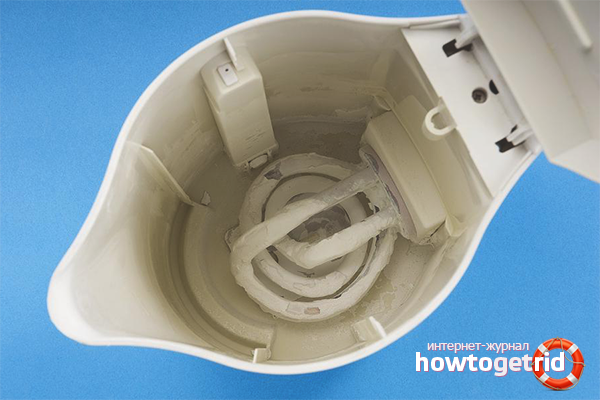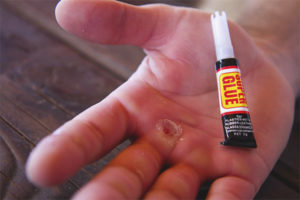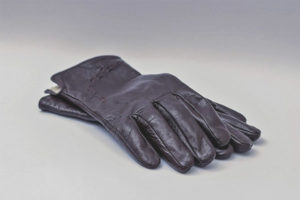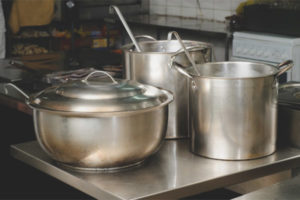The content of the article
There are impurities of harmful metals even in water that has passed the filtration stage. During boiling, substances settle on the walls of pots, electric and ordinary kettles. A scale layer forms, which not only increases the heating time of the device, but also causes a strange taste. The reddish coating is dissolved with Coca-Cola, vinegar essence, potato or apple peel. But citric acid is considered the most effective and gentle means.
Why does it work
Scale on the walls of an electric kettle appears due to an excess of magnesium and calcium salts, as well as iron impurities. Small particles of material settle on the inside of the device, gradually forming a thick layer of whitish or reddish plaque. In some cases, it is removed mechanically, but if the kettle is made of plastic or glass, cracks and chips may remain, which will reduce the life of the unit.
Citric acid works softer than popular store formulations, soda and vinegar essence. The food additive reacts chemically with plaque. It dissolves metals and salt deposits. It also protects iron kettles from corrosion that occurs due to scale. Removes chalky brownish dots and stains, stops the destruction of the material.
The product does not leave scratches on the plastic and glass surfaces, unlike soda. Water after using citric acid has a pleasant smell and aroma. And if the particles of the food additive get into tea, then nothing bad will happen, because the component is not dangerous for the stomach and intestines.
Gentle method
A fresh layer of scale from glass and enameled surfaces is removed with a small amount of citric acid. In a teapot filled with two-thirds with water, pour 20–35 g of powder. The solution is stirred with a wooden spoon until all crystals are dissolved. Bring to a boil and leave on the stove for 5 minutes if the layer of potassium or magnesium salts is not too thick. Otherwise, you need to increase the interval to 10-15 minutes.
Electric kettles are equipped with an automatic shutdown system. In order for the water to continue to boil, and after heating to 100 degrees, you need to open the cover of the unit before use. It is better to put a working device with the hood turned on so that steam does not damage the ceilings and walls of the kitchen.
Lemon solution is advised not to be poured into the sink, but into the pan. The workpiece can be reused to clean the kettle from the outside. Water with acid washes away dirt, and traces of scale, and greasy stains.
Citric acid is a gentle remedy, but it has one drawback. For the additive to begin to interact with salts and heavy metals, it needs at least 3-4 hours. Experienced housewives prefer to clean the kettle at night. When all family members go to bed, they boil water with citric acid and leave it in the appliance until the morning.
After waking up, they turn on the unit again, without replacing the solution. This is necessary so that the scale becomes soft and supple. Most of the plaque will separate itself from the walls of the electrical device. The remaining pieces are washed off with a sponge. If the teapot is glass or enameled, it is better to take a soft rag. It will not leave scratches on a fragile surface.
The cloth is impregnated with a detergent or soapy composition. Carefully remove the descaling particles with a sponge. And then several times pour distilled water into the device and bring it to a boil. Why do I need to take bottled liquid? It has a minimum of impurities. But in the version from the tap there are a lot of harmful substances that re-settle on a clean kettle.
Glass teapots are updated with another, more gentle method. Scale solvent is prepared from warm water and 30–40 g of lemon powder. The components are stirred in a pan or jug and then poured into an electrical appliance. Acid will take 4-5 hours to crack down on plaque. It remains only to rinse the container. And all, you can use the kitchen utensils for their intended purpose.
If there are a lot of petrified salts on the walls, then the basis for the cleaning solution is heated to boiling point. Pour 2 small bags of acid into the hot liquid and mix thoroughly. The container is tightly closed with a lid and wait until the water has completely cooled. The procedure is repeated from 1 to 3 times. Lemon powder will not damage the walls of the kettle.
Sometimes plaque is so eaten into the material that it cannot be softened the first time. Then resort to the option with soda. After treatment with a lemon solution, slurry from baking powder and water is applied to the walls. Rub the kettle with a sponge or rags to dissolve plaque. And repeat the experiment with citric acid.
Aggressive way
The old stubborn scale is dissolved with a mixture of vinegar, soda and citric acid. The composition is effective, but not suitable for working with glass and thin plastic. In this way, metal teapots are often cleaned, which are boiled on the stove. Electrical options may break. The solution also removes scale from enameled surfaces. But the vinegar-lemon solution in this case cannot be combined with stiff brushes and sponges.
The first stage is the softening of the soda coating. 30-50 g of a food additive are poured into a device filled with distilled water. The solution should boil from 20 minutes to half an hour. Hot liquid is poured into the sink. 2-3 small packets of citric acid are added to a new portion of water. Bring to 95-100 degrees, immediately drained.
The last step is the vinegar solution. On 1,5–2 l of a basis of a half-glass of an additive. Boil as much as soda. Pour, rinse twice with clean water. A vinegar odor may remain, but it will disappear on the second or third day. It can be removed by adding a little citric acid to the rinse.
A vinegar solution helps refresh a stainless steel kettle. The option is intended for utensils that are heated on the stove, but not for electrical items. The container is half filled with water, 150 ml of vinegar are added. Insist 20 minutes for the additive to enter into a chemical reaction with salt deposits. Then pour 40-60 g of citric acid into the solution. Stir, bring to a boil and immediately turn off the stove. Water with additives is not poured out, but cooled for 20–25 minutes. Then gently shake so that particles of hardened salts separate from the surface of the kettle.
The softened coating that remains on the enamel or stainless steel is treated with a soft sponge. A little detergent for dishes is applied to the inner and outer walls of the kettle. Cleaning is carried out with rubber gloves so that the vinegar-lemon solution does not damage the skin. It remains to rinse the utensils and wash the remnants of plaque and aggressive substances.
Preventative measures
20-25 g of a food additive are poured into water. Stir so that the crystals dissolve, rather than settle to the bottom. The fluid is heated to 90–95 degrees. Insist all night, and in the morning rinse the kettle with warm water. You can simply fill the device with a solution of citric acid and insist for half an hour without boiling. But this method only works with fresh scum.
Plaque from salts of magnesium and potassium appears on the walls of teapots due to poor-quality water or poor filters.Soft and gentle cleaning of kitchen utensils from hardened sediments is carried out with citric acid. A food supplement is also used to prevent scale and corrosion.
Video: how to descale the kettle










Submit